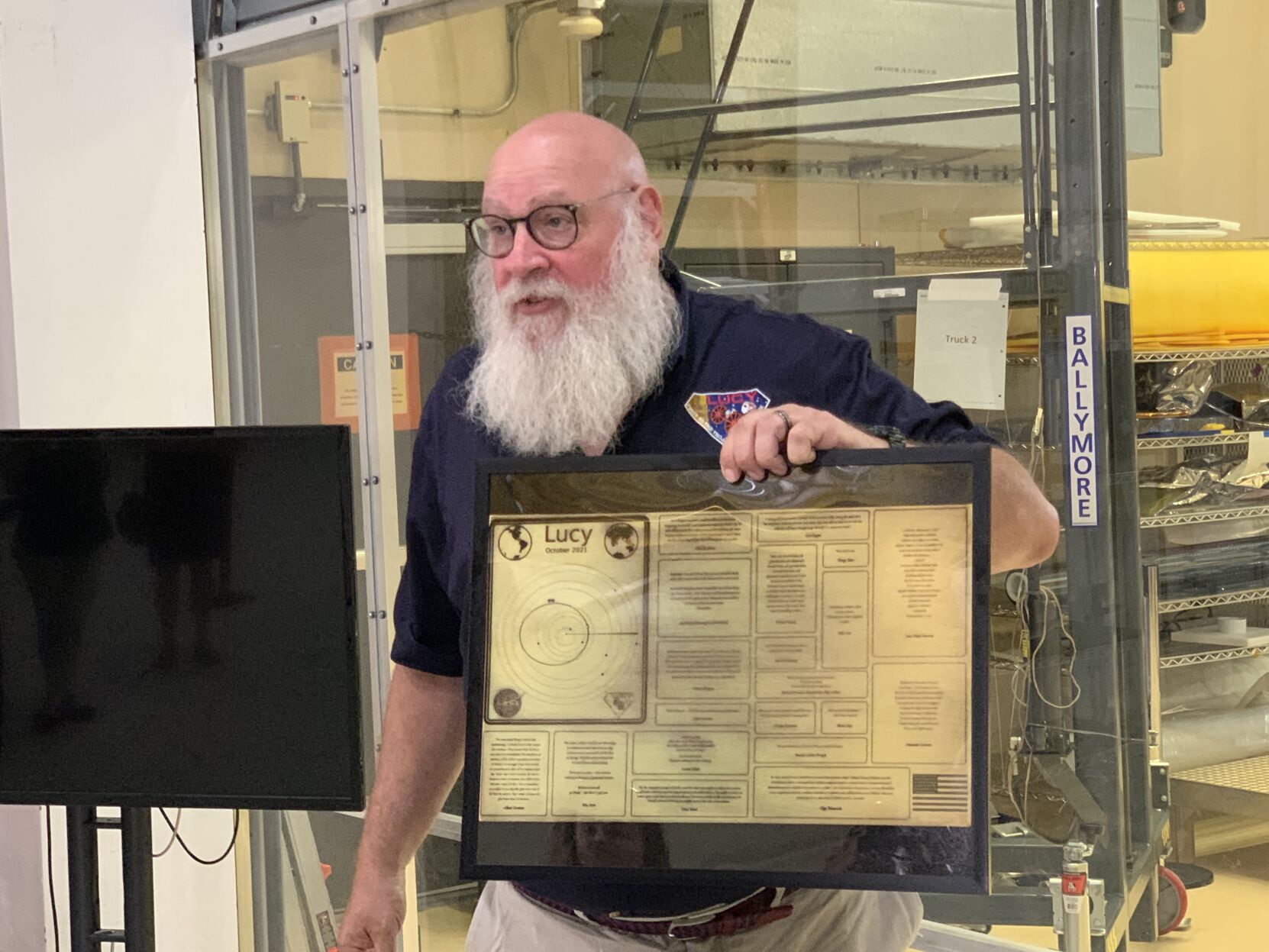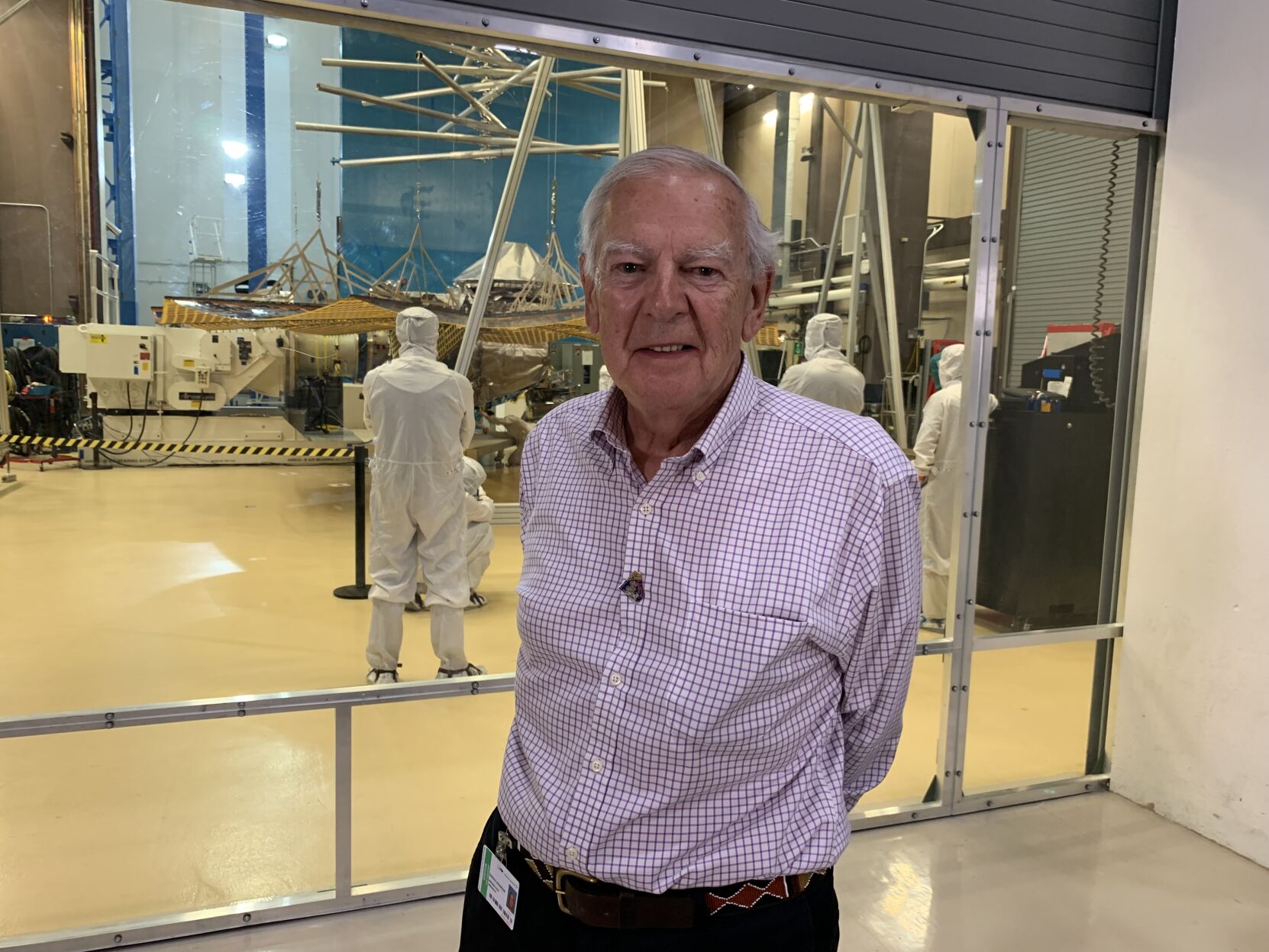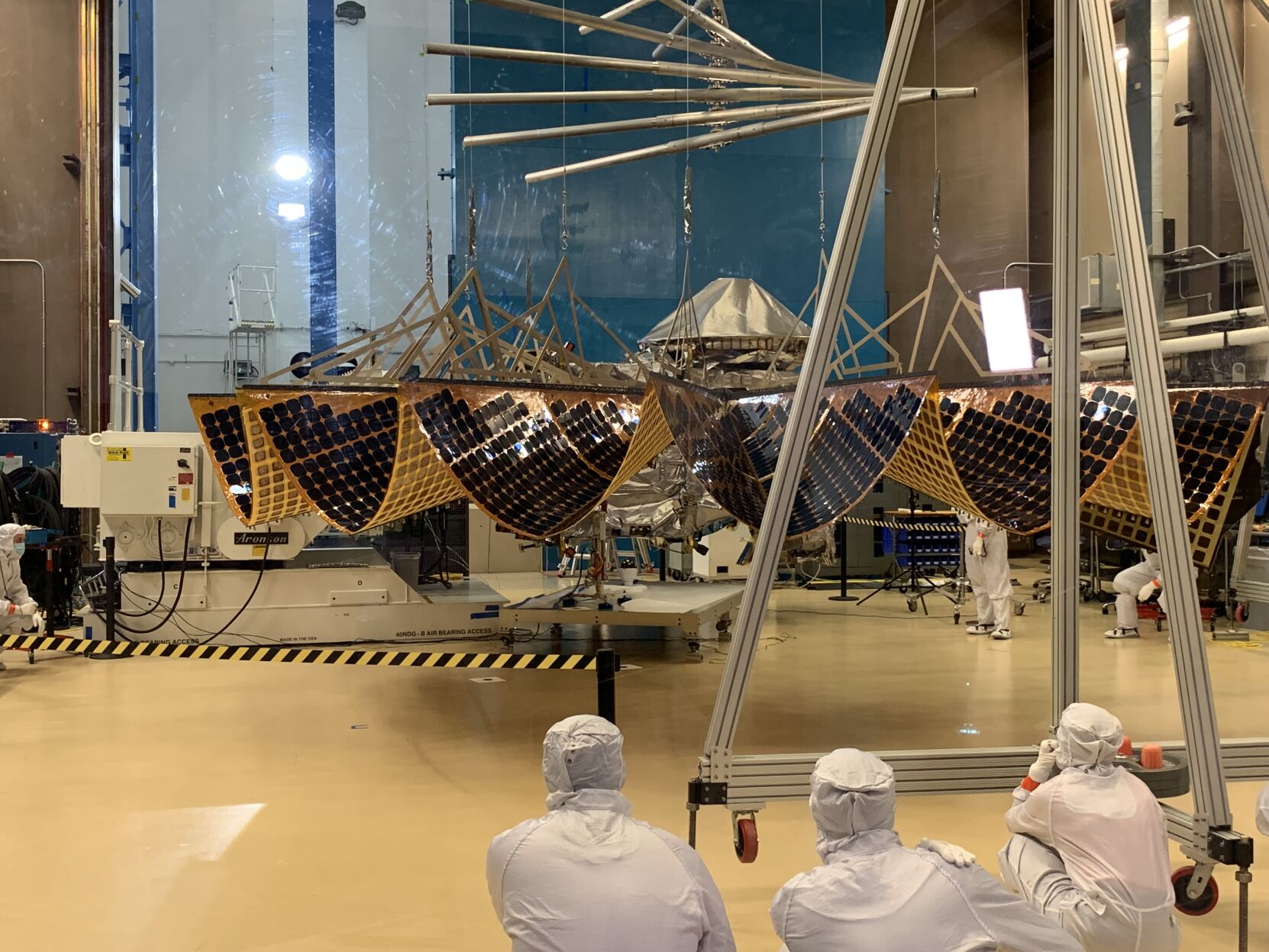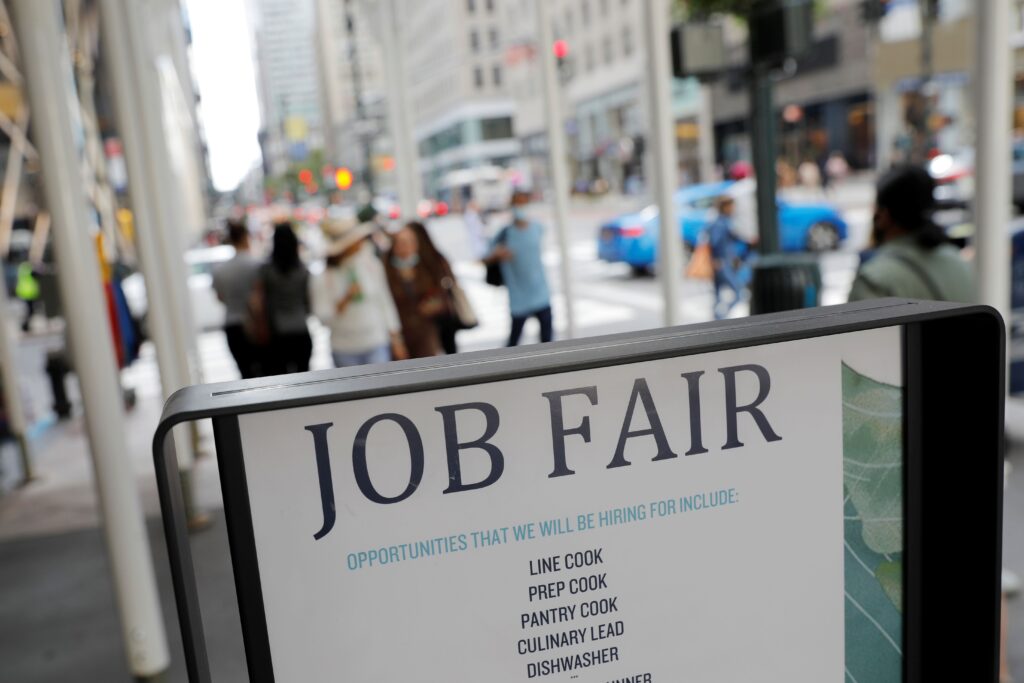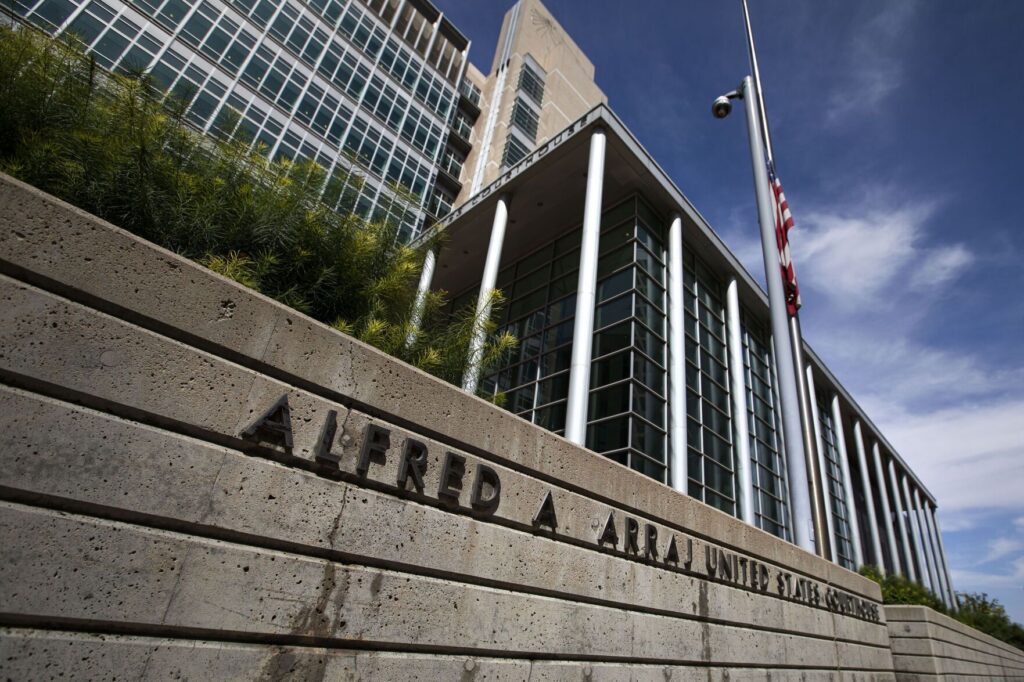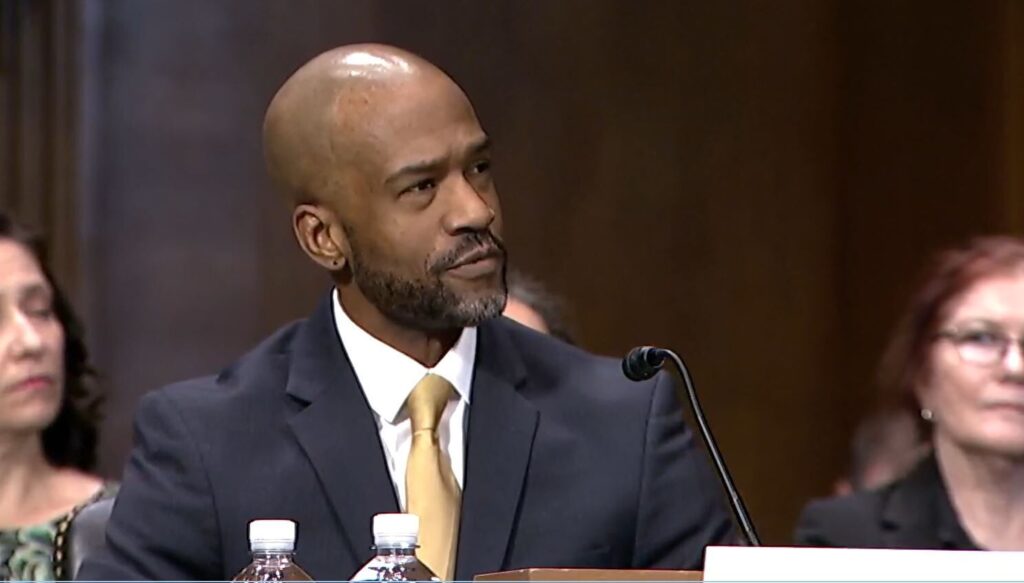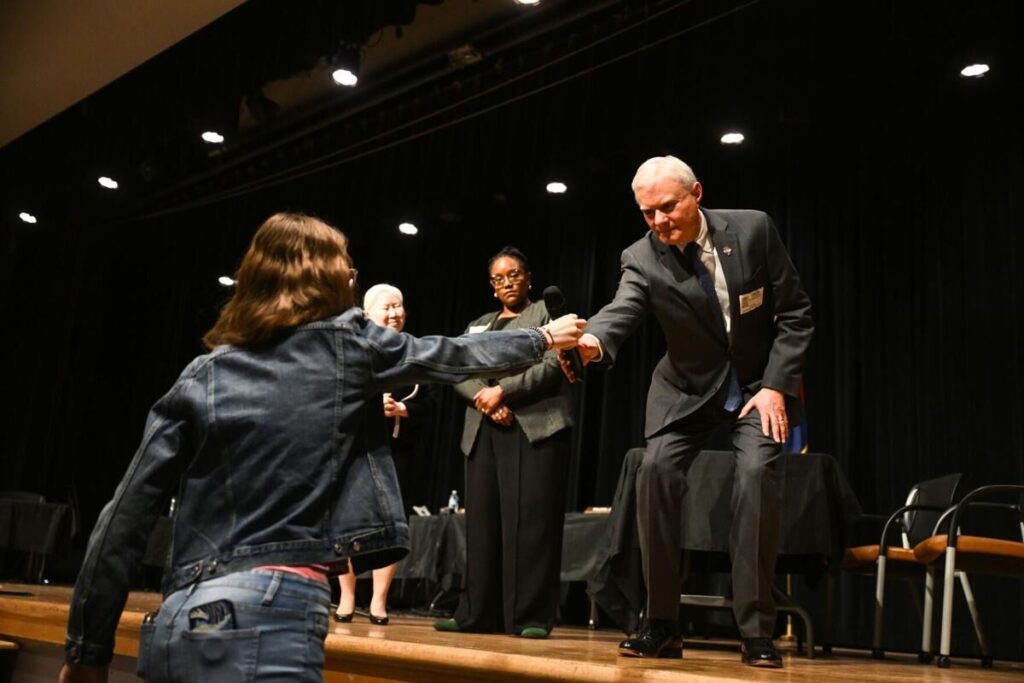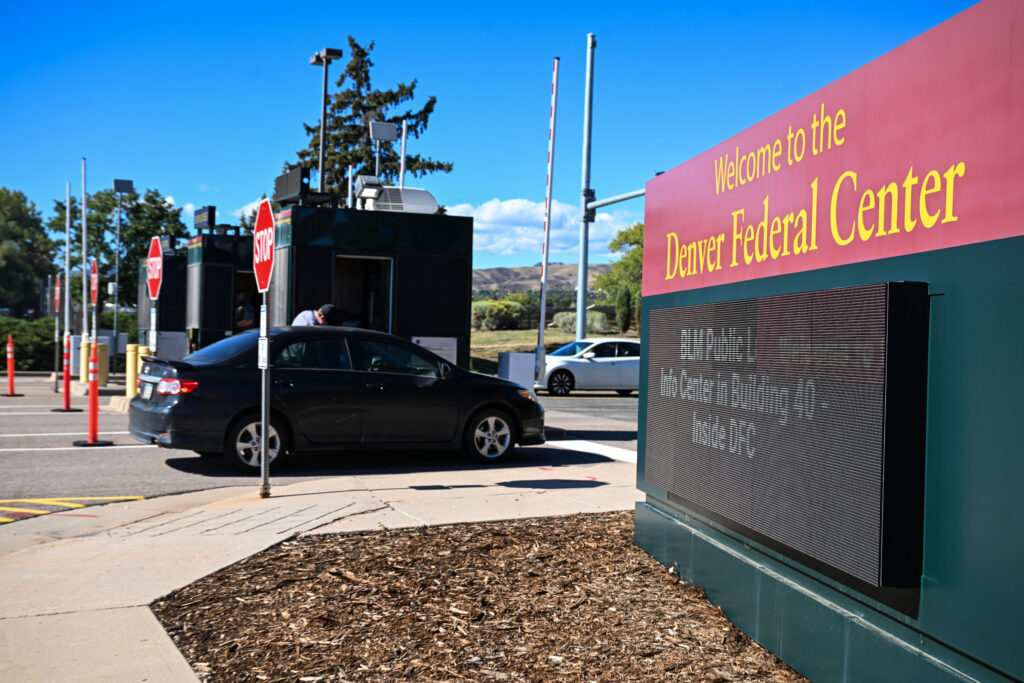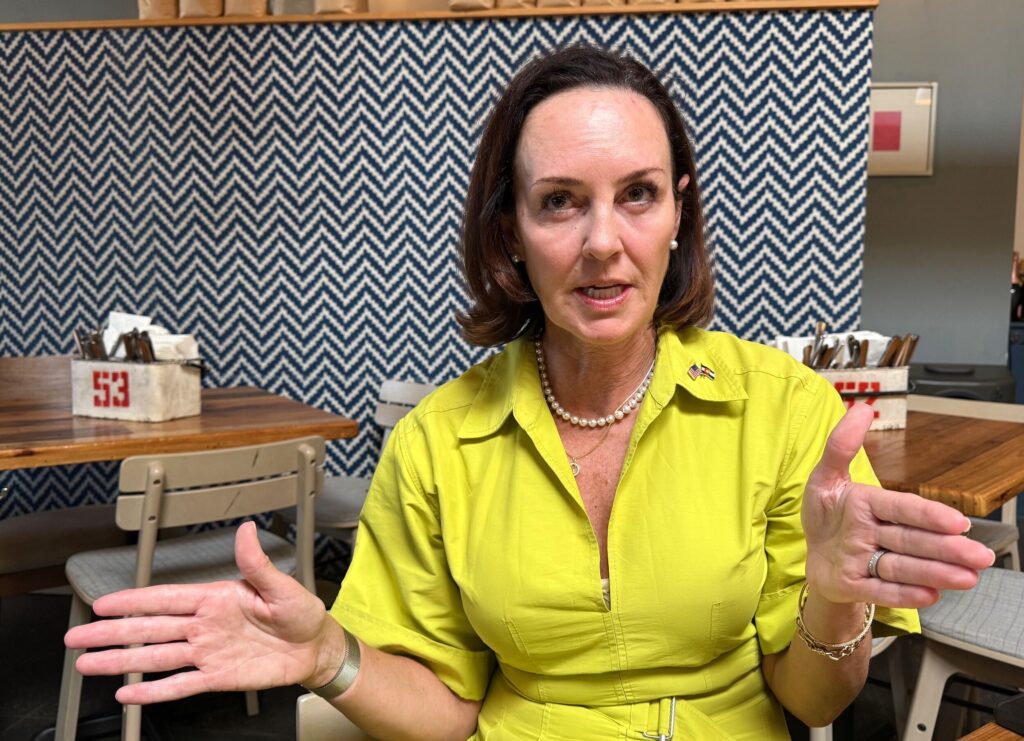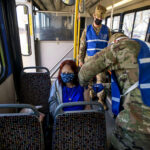Lockheed Martin readies “Lucy” for 12-year journey
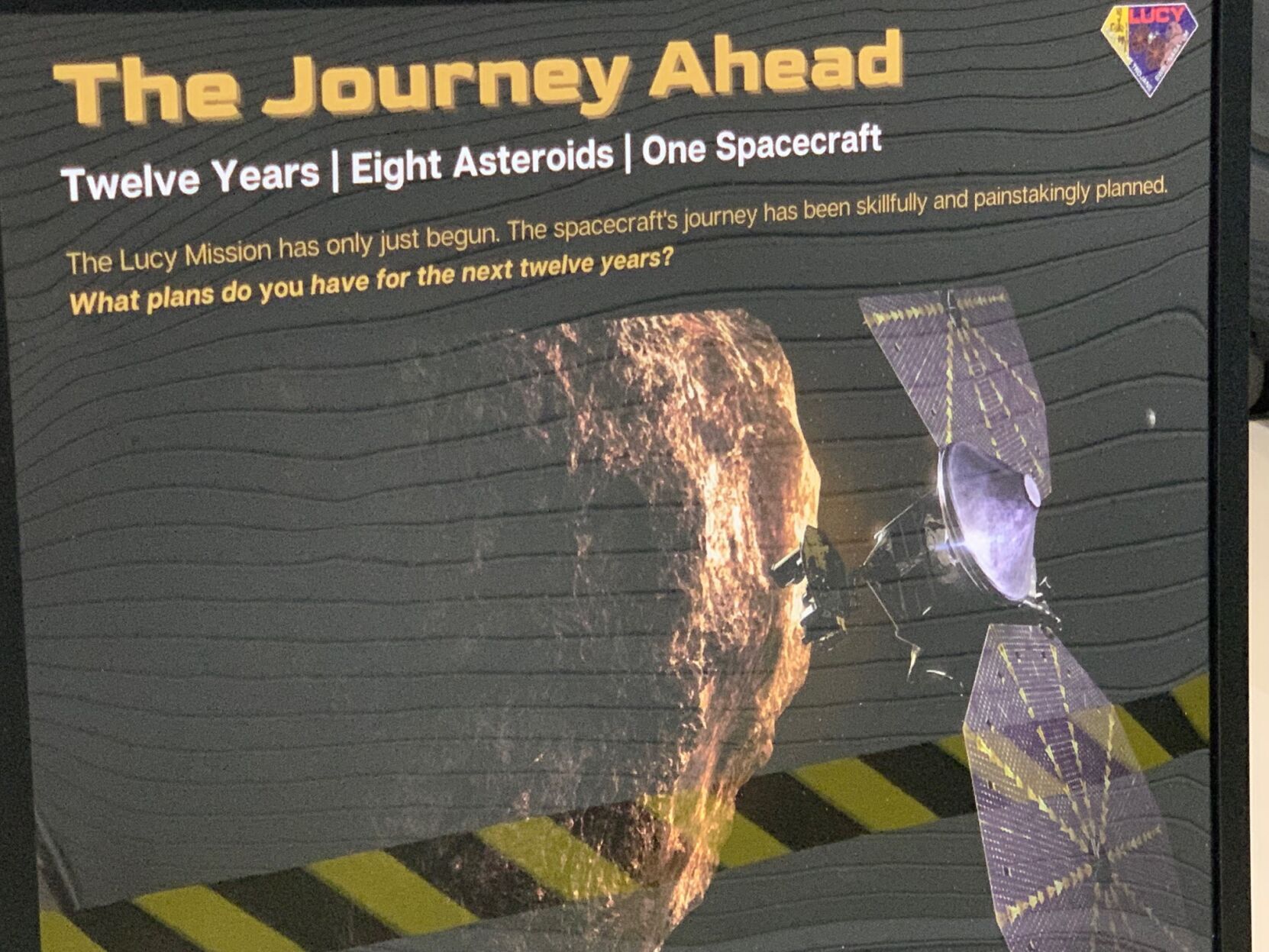
Lucy is scheduled to be in the sky in October, and there will even be a little diamond involved.
“Lucy” is the name of the spacecraft NASA will launch later this year to study the ancient Trojan asteroids near Jupiter. While the program is a joint effort by NASA Goddard and Boulder-based Southwest Research Institute, the spacecraft itself was designed, built, tested and will be operated by Lockheed Martin.
On Friday, officials from each organization gathered at the company’s Waterton campus, in Waterton Canyon southwest of metro Denver, to witness the spacecraft’s large solar arrays unfurl, and to get a glimpse the plaque that will be attached to Lucy.
The spacecraft is scheduled to launch in 99 days – the launch window from Cape Canaveral Space Force Station in Florida opens Oct. 16. It will launch on a Centennial-based United Launch Alliance’s Atlas V rocket.
The wing-like solar arrays (panels) are each 24-feet wide – almost 50 feet when both are deployed with the 2-foot spacecraft in the middle. They were designed and built by Northrop Grumman in Goleta, California, and will supply about 500 watts of power throughout the 12-year mission – about the energy needed to run a washing machine.
Lockheed’s Rich Lipe, program manager, said the arrays were twice as stiff, and weighed half as much as previous arrays.
NASA states Lucy will be “operating farther from the Sun than any previous solar-powered spacecraft.” It will travel some 4 billion miles at speeds of 17,000 mph.
Donald Johanson, the famous archaeologist who discovered the 3.2 million-year-old humanoid skeleton later named Lucy in Ethiopia in 1974, joined the event – traveling from his home in San Francisco.
Johanson said he was he was shocked when the “wonderful email” arrived breaking the news about the spacecraft’s name.
“To think that Lucy, at 3.2 million years old, will inspire exploration of the solar system is absolutely astonishing,” Johanson said.
Hal Levison, Lucy’s principal investigator (scientist) from the Institute, said the parallels are perfect in that Lucy changed the way we understand human evolution and spacecraft Lucy will bring understanding of the origins of the giant planets – and thus the universe.
“The Trojan asteroids are leftover fragments of the giant planets, so they are fossils with information we can learn about the formation of planets,” Levison said.
When asked about the most challenging aspect of building and testing Lucy, Lockheed’s Rich Lipe, program manager, didn’t hesitate: “The pandemic.”
“We were all locked down for a year-and-a-half, but we came together and made it happen,” Lipe said.
There’s usually a lot of travel involved between all U.S. time zones by company officials, scientists and engineers – but that was all thwarted by the COVID-19 shutdown, said Donya Douglas-Bradshaw, Lucy’s project manager from NASA.
“We had to innovate our programs to maintain safety,” Douglas-Bradshaw said.
The plaque – a NASA tradition that goes back to it’s earliest space craft, will put messages from Earth into space, Levison said.
“It makes us feel connected with the rest of the world and the universe,” he said. “Lucy is going to stay in orbit around the sun for 1-2 million years. Think about that 3.2 million year old fossil and how much we’ve changed as a people since then … The plaque will leave a message of our history for maybe 10,000 years down the road when an astro-archaeologist picks up the spacecraft.”
Messages are from cultural and historical figures, like Martin Luther King Jr., Carl Sagan and even Ringo Starr from the Beatles.
Speaking of the Beatles, Lucy the fossil skeleton got her name from the band’s hit song “Lucy in the Sky with Diamonds.” Johanson and his team were celebrating the find over a campfire when the song came on and the famous name stuck.
Johanson was obviously thrilled scientists planned to name an undiscovered asteroid on the mission after him.
“Lucy is the real star, but now I almost have one too,” he said. “The success of humans is because we’re not afraid to explore.”
The previously mentioned diamond, by the way, is a tiny one located in Lucy’s optical systems, Levison said.
At the end of July, the space craft will be packed on to a C-17 transport airplane at Buckley Air Force Base for the trip to Florida.


